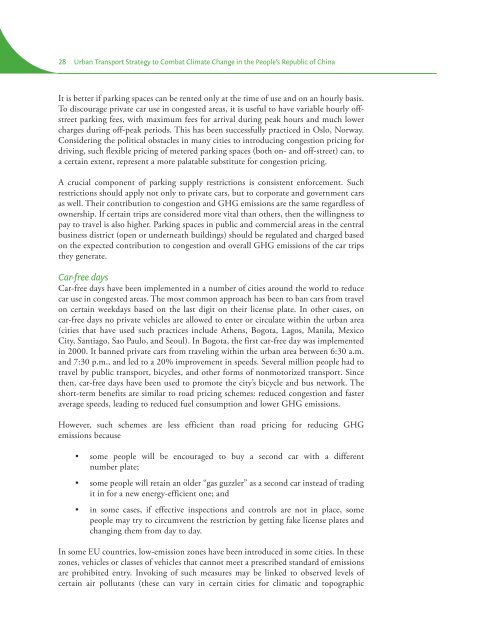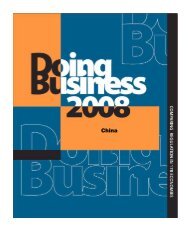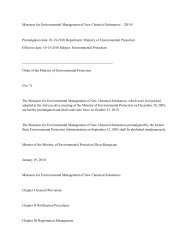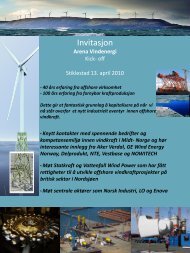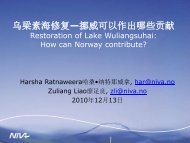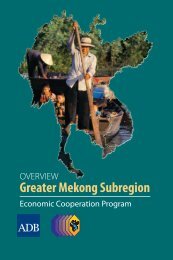Urban Transport - India Environment Portal
Urban Transport - India Environment Portal
Urban Transport - India Environment Portal
Create successful ePaper yourself
Turn your PDF publications into a flip-book with our unique Google optimized e-Paper software.
28 <strong>Urban</strong> <strong>Transport</strong> Strategy to Combat Climate Change in the People’s Republic of ChinaIt is better if parking spaces can be rented only at the time of use and on an hourly basis.To discourage private car use in congested areas, it is useful to have variable hourly offstreetparking fees, with maximum fees for arrival during peak hours and much lowercharges during off-peak periods. This has been successfully practiced in Oslo, Norway.Considering the political obstacles in many cities to introducing congestion pricing fordriving, such flexible pricing of metered parking spaces (both on- and off-street) can, toa certain extent, represent a more palatable substitute for congestion pricing.A crucial component of parking supply restrictions is consistent enforcement. Suchrestrictions should apply not only to private cars, but to corporate and government carsas well. Their contribution to congestion and GHG emissions are the same regardless ofownership. If certain trips are considered more vital than others, then the willingness topay to travel is also higher. Parking spaces in public and commercial areas in the centralbusiness district (open or underneath buildings) should be regulated and charged basedon the expected contribution to congestion and overall GHG emissions of the car tripsthey generate.Car-free daysCar-free days have been implemented in a number of cities around the world to reducecar use in congested areas. The most common approach has been to ban cars from travelon certain weekdays based on the last digit on their license plate. In other cases, oncar-free days no private vehicles are allowed to enter or circulate within the urban area(cities that have used such practices include Athens, Bogota, Lagos, Manila, MexicoCity, Santiago, Sao Paulo, and Seoul). In Bogota, the first car-free day was implementedin 2000. It banned private cars from traveling within the urban area between 6:30 a.m.and 7:30 p.m., and led to a 20% improvement in speeds. Several million people had totravel by public transport, bicycles, and other forms of nonmotorized transport. Sincethen, car-free days have been used to promote the city’s bicycle and bus network. Theshort-term benefits are similar to road pricing schemes: reduced congestion and fasteraverage speeds, leading to reduced fuel consumption and lower GHG emissions.However, such schemes are less efficient than road pricing for reducing GHGemissions because• some people will be encouraged to buy a second car with a differentnumber plate;• some people will retain an older “gas guzzler” as a second car instead of tradingit in for a new energy-efficient one; and• in some cases, if effective inspections and controls are not in place, somepeople may try to circumvent the restriction by getting fake license plates andchanging them from day to day.In some EU countries, low-emission zones have been introduced in some cities. In thesezones, vehicles or classes of vehicles that cannot meet a prescribed standard of emissionsare prohibited entry. Invoking of such measures may be linked to observed levels ofcertain air pollutants (these can vary in certain cities for climatic and topographic


